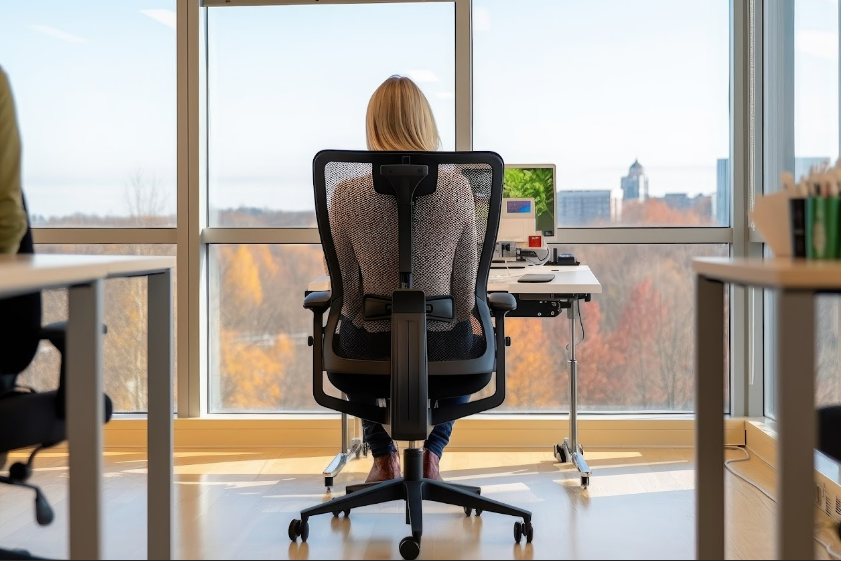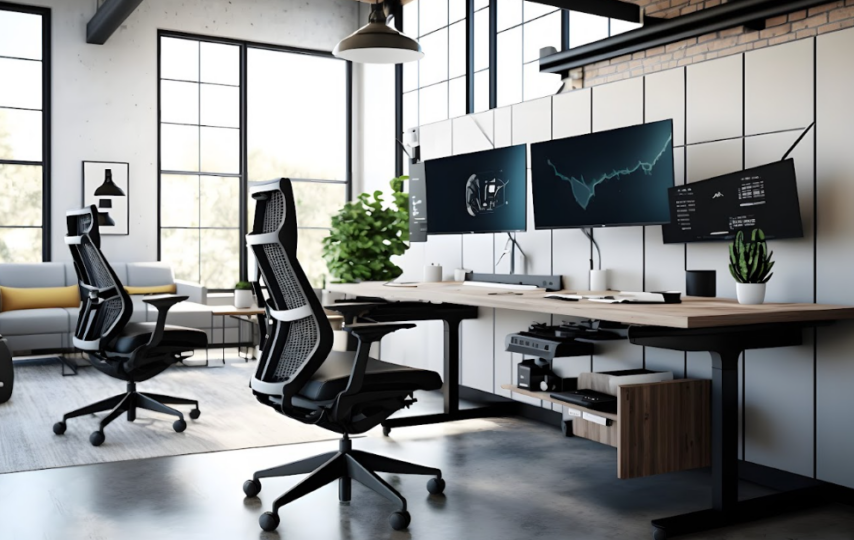Physical comfort in the workplace is not just a luxury; it’s a fundamental necessity for maintaining workforce efficiency. When an employee sits at a desk for hours on end, the body can bear the brunt of poorly designed furniture, having far-reaching implications on overall well-being and output.
A comfortable and well-designed work setting, on the other hand, fosters positivity and creativity. In such an environment, individuals find it easier to stay motivated, collaborate, and contribute meaningfully to the organization’s objectives. Furthermore, a physically pleasant workspace can reduce absenteeism and employee turnover, both of which are vital for maintaining a robust and efficient team.
Imagine sitting on a chair that’s too high or a desk that’s too low, and the persistent discomfort nibbling away at your concentration. Such displeasure is not just an annoyance; it’s a silent productivity killer. The constant need to shift positions, massage a sore neck, or alleviate wrist pain makes it arduously difficult for the brain to stay focused on the task at hand.
The relentless juggling between physical discomfort and work responsibilities ends up draining mental resources. The cognitive load associated with handling both discomfort and job duties essentially creates a mental bottleneck, where focus and attention are sacrificed, leading to a decline in the quality and quantity of work.
The Correlation Between Ergonomic Furniture And Physical Comfort
Ergonomic furniture is designed to support the human body effectively, facilitating optimal posture and reducing strain on muscles and joints.
Chairs with adjustable armrests, lumbar support, and the ability to swivel or recline, for instance, are key in accommodating different body types and work habits. Adjustable desks that allow for standing or sitting cater to the dynamic nature of today’s workforce, while alleviating the monotony and physical toll of prolonged sitting.
It’s no surprise that employees often experience increased energy and engagement when their workspace is equipped with ergonomic furniture. Through minimizing physical discomfort, ergonomic solutions liberate mental resources, thereby paving the way for enhanced focus, creativity, and ultimately, productivity.
Ergonomic Office Furniture Choices

By prioritizing physical well-being, ergonomic furniture lays the foundation for amplified efficiency and innovation.
- Ergonomic Chairs
At the forefront of ergonomic innovation is the chair. Whether working from an office or at home, long hours of sitting can take a toll on your body and lifestyle. It gets even worse when you’re using a traditional chair. But with an ergonomic chair, you can sit comfortably and be more productive.
One noteworthy vendor in this domain is Freedman’s Office furniture, which offers a wide array of seating solutions.
Ergonomic chairs often come with a plethora of customizable features, such as adjustable armrests, lumbar support, and seat height. These elements contribute to maintaining an ideal posture, minimizing the strain on the back and neck, and facilitating circulation.
A comfortable sitting experience can significantly reduce fatigue, leading to sustained energy levels throughout the day. This comfort ultimately translates into an increased capacity to focus, make decisions, and contribute to teamwork.
- Adjustable Desks
Unlike their static counterparts, adjustable desks offer a level of flexibility that caters to individual preferences and needs. The option to easily transition between sitting and standing positions is particularly beneficial for dynamic work environments.
Standing desks have been linked to reduced back pain, increased energy, and improved mood. By alternating between sitting and standing, individuals can break the monotony, potentially boosting focus and productivity.
- Keyboard Trays And Ergonomic Keyboards
Keyboard trays that can be adjusted for height and angle, coupled with ergonomic keyboards, are designed to promote a natural hand position. This, in turn, can significantly reduce the risk of wrist strain and conditions such as carpal tunnel syndrome.
Split keyboards and those with a negative tilt are examples of ergonomic designs that cater to the natural alignment of the hands and wrists, offering a more comfortable typing experience.
- Monitor Stands
Monitor stands allow for easy adjustment of screen height and distance, ensuring that the top of the screen is at or slightly below eye level. This prevents the need to tilt the head, which can cause neck strain.
Proper screen positioning can also reduce eye strain and the risk of developing computer vision syndrome by helping to maintain a comfortable viewing distance and angle.
- Ergonomic Accessories
Other ergonomic accessories like a vertical mouse or an angled footrest can further enhance comfort by promoting natural postures and reducing strain on specific body parts. These small additions can have a cumulative positive effect on well-being and productivity.
The positive impact of ergonomic furniture in the workplace is significant. Investing in these innovative solutions is not just an investment in furniture; it’s an investment in human capital and organizational success.
Recommendations For Choosing The Right Furniture
When scouting for ergonomic furniture, consider the diversity in your workforce’s physical attributes and working styles. Opt for chairs with adjustable features such as armrests, lumbar support, and seat height. For desks, evaluate options that offer flexibility in height and layout. It’s also wise to scrutinize the durability and warranty of products.
Combining Ergonomics With Other Productivity-Boosting Practices
While ergonomics is a cornerstone for a productive work environment, it’s even more potent when coupled with other productivity-boosting practices. Encouraging regular breaks, promoting an organizational culture of open communication, and ensuring natural lighting can enhance the effects of ergonomic furniture.
Conclusion
Thoughtful office furniture choices serve as the foundation upon which productivity can flourish. It is essential to recognize that the correlation between ergonomics and efficiency is not merely coincidental. Companies and individuals are thus encouraged to genuinely consider the symbiotic relationship between ergonomics and productivity. The benefits of this investment are numerous, extending beyond the office to positively impact the overall well-being and satisfaction of the workforce.







